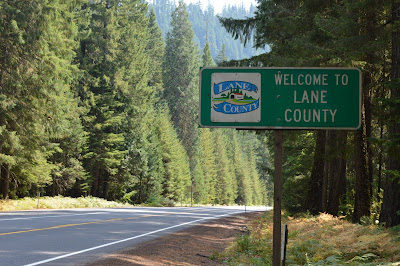A Deeper Look: Linn County
 |
| Linn County, Oregon |
Thus says the Lord, “Stand in the ways and see, and ask for the old paths, where the good way is, and walk in it; then you will find rest for your souls. Jeremiah 6:16
The primary elections were held this week. Some results are still pending but continue to keep the integrity of the election process in prayer.
Having
made our way down the North Coast, Southern Coast and across a few southern
Oregon counties, we want to take a closer look at a tri-county region at the
southern end of the Willamette Valley and west to the middle coast. The Linn-Benton-Lincoln
County area is often linked anyway, so we will look at this region beeginning
with Linn. Created in 1847 from southern Champoeg (Marion) the boundaries were
altered later to accommodate Lane and Wasco. Calapooia, which later became
Brownsville, was the first county seat, but in 1851 Albany was named the county
seat.
 |
| Linn, Benton, Lincoln Counties |
We’ve looked at the history of Albany a bit already. Let’s step back a few years and look at that original county seat, Brownsville.
Brownsville/Calapooia
got its start in 1845-6 when settlers began taking up claims along the south
side of the Calapooia River where a man named Kirk had established a ferry. Captain
James Blakely laid out a town plat on that side of the river and named it after
his uncle/business partner Hugh Brown in 1853. These two went on to establish a
general store and other enterprises.
Meanwhile,
in 1858 on the north side of the river, the Reverend Henry H. Spalding plated
the town of Amelia, named after his youngest daughter. By 1859 these two towns
plus another community combined to form what is now Brownsville.
Wait…what?
Henry H. Spalding? In 1836 Marcus and Narcissa Whitman and Henry and Eliza Spalding
were the first missionaries - the wives were the first European women - to make
the trek to the Oregon Territory, which at that time was a much larger area.
The Whitmans settled in what is now Washington State, just north of Walla
Walla. The Spaldings went on to North Idaho near Lewiston and established a
mission among the Nez Perce. Henry,
while sometimes not popular among the Nez Perce due to his rigid and harsh
attitude – he had no tolerance for drinking, gambling, or polygamy - nevertheless
taught the natives to farm and established a thriving mission. He preached to a
congregation of 500 that on special occasions could reach 2000. One of his
early converts, a Nez Perce from the Wallowa area of Oregon, took the name Joseph
after his baptism. He later had a son, also named Joseph, who became the Chief
Joseph who attempted to lead his people north to Canada to escape being put on
a reservation.
Eliza gets
much credit for the success of the mission as she served as a buffer between
Henry and the Nez Perce. They adored her. She was often “shadowed” in her own
home by native women who wanted to see how she raised her children, cooked,
cleaned, did her hair. In addition to having a respectful and empathetic
personality, she was an exceptional teacher. She learned the Nez Perce language,
wrote books in their language, and developed techniques to teach large numbers
of children English, the Bible, hymns, and how to sew and weave. They had the
first loom and the first printing press in the West at Lapwai, their mission complex.
With an
active, growing mission among the Nez Perce in northern Idaho in the 1840’s,
what were they doing 442 miles away in Linn County in the 1850’s?
In 1847
their friends and fellow missionaries, the Whitman’s and 11 others, in
Washington were murdered by the Cayuse Indians who blamed them for an epidemic of
measles among the tribe. This made the entire intermountain area unsafe for
several years. The Spaldings evacuated to the Willamette Valley, Oregon City at
first, then to a house in Forest Grove. Tualatin Academy, which later became
Pacific University, was just getting started in Forest Grove at that time and
Eliza Spalding was hired to be their first teacher.
In 1849 they moved to early Brownsville where Henry
pastored a church and was commissioner of schools. Sadly, Eliza died in 1851, and was buried in Brownsville. She was only 44. Henry remarried a couple of years later and was finally
allowed to return to the mission in Idaho but was back and forth to Brownsville
for many years. He died at Lapwai in 1874.
Because of
their position close to the Oregon Trail and, of course, the massacre, the
Whitmans are familiar names. The Spaldings are as well, but personally, I
associate them with Idaho and the Nez Perce. Interesting to know they had an
impact on Linn County as well, in the early days of Oregon settlement.
Back to
modern times: Linn County was one of 14 counties involved in a lawsuit against
the state of Oregon for the state’s failure to maximize timber harvests that
were designated to fund the counties. The counties were awarded 1.1 billion, but the
Oregon Court of Appeals recently overturned the decision. Linn County has
traditionally relied heavily on timber, so this is of major importance.
How do we
pray for Linn County?
And
what does the Lord require of you but to do justly, to love mercy, and to walk
humbly with your God?
Micah 6:8
Pray
for local government. The County Commissioners are Roger Nyquist, Sherrie Sprenger,
and Will Tucker. The Sheriff is Michelle Duncan.
Pray for
the lawsuit regarding timber harvests against the state of Oregon. While the Court
of Appeals has overturned it, we don’t believe the matter is over yet.
Pray that
the legacy of those Christians who served in the early Oregon Territory with wisdom,
love, and grace, like Eliza Spalding, is renewed and restored. While not all
done in Christ’s name was of Him, and missionaries were of varying abilities, she
laid a good foundation in Oregon as well as Idaho.



Comments
Post a Comment